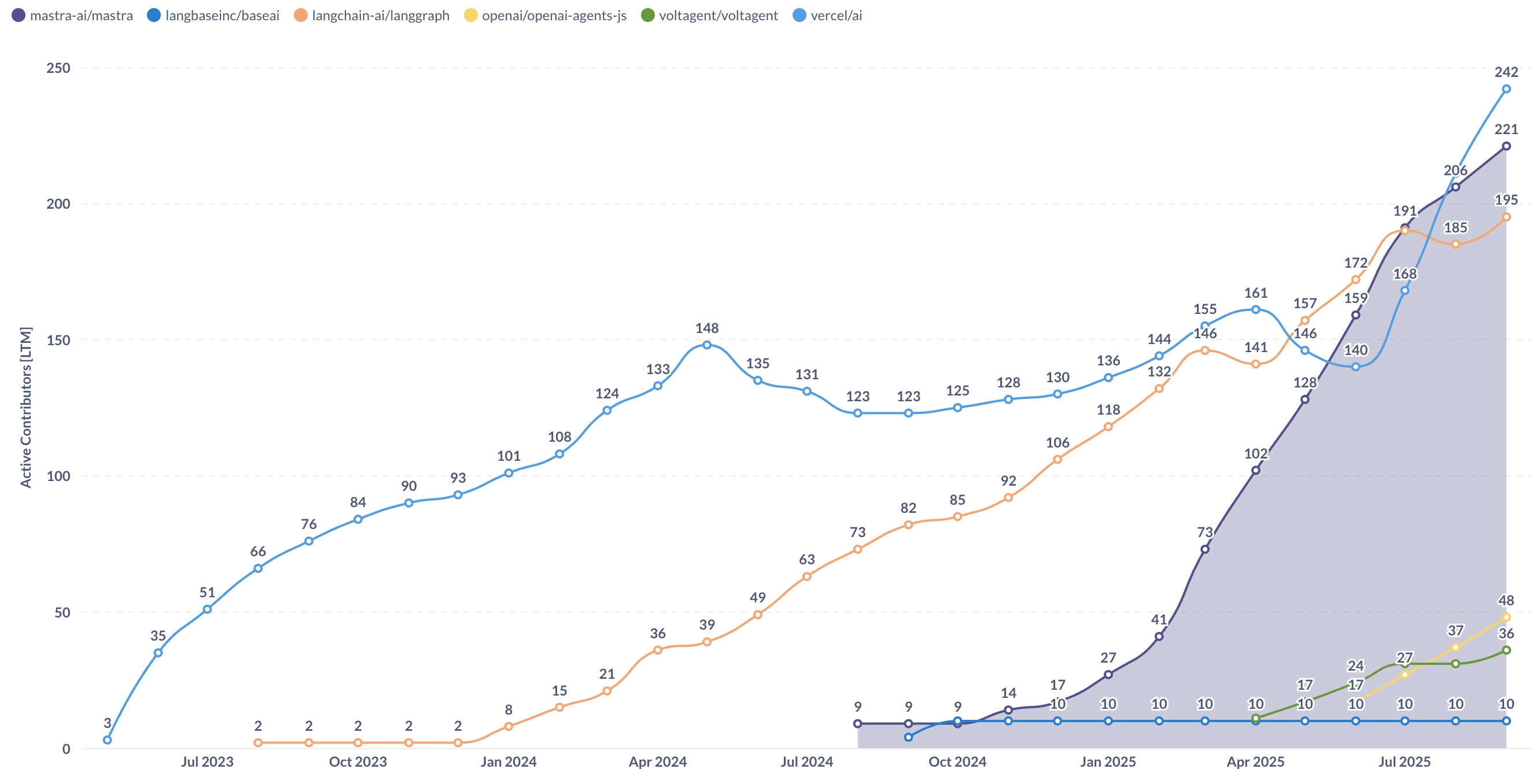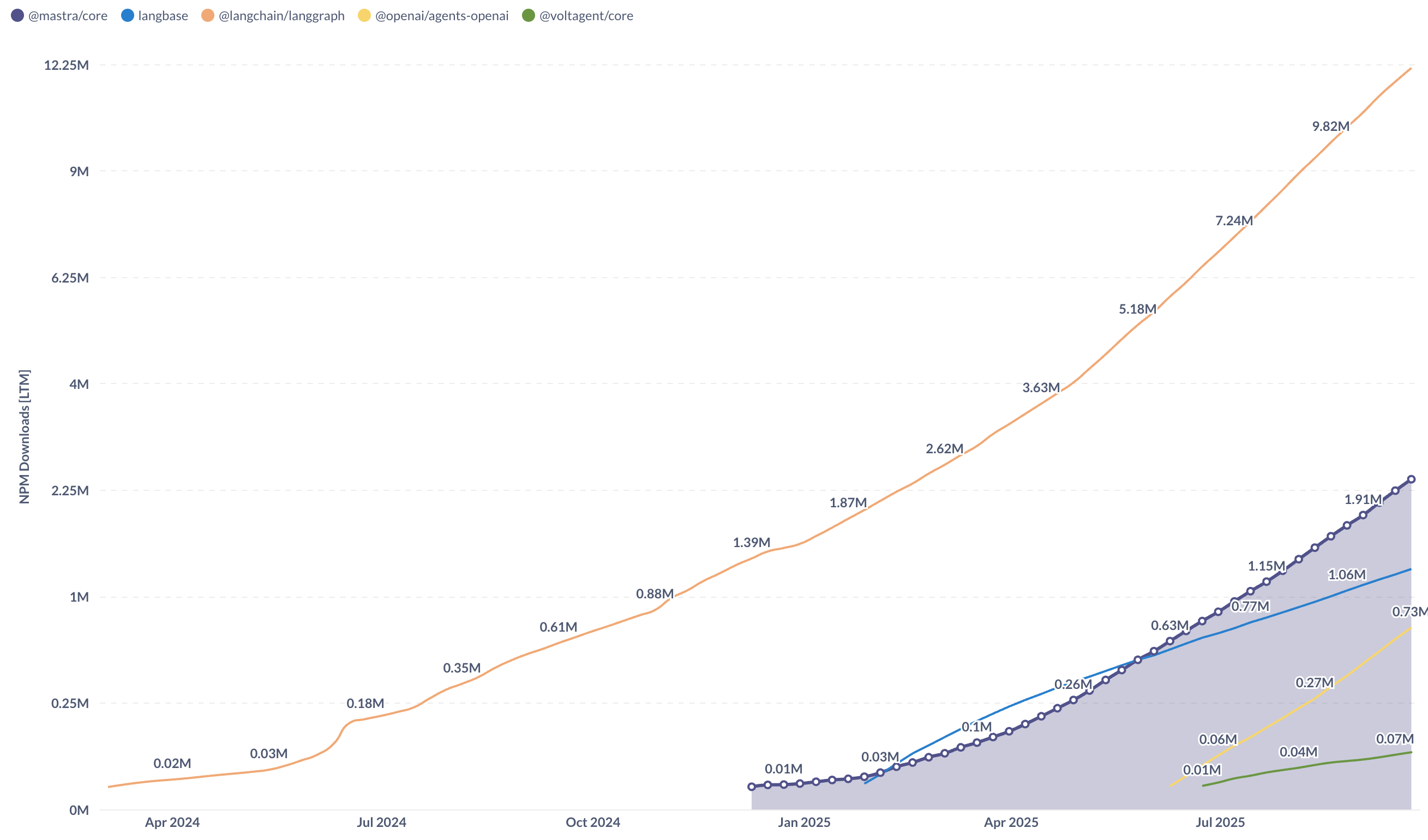Investment: open source AI agent framework Mastra
The global agentic AI market is expected to grow from $7B to $93B in the next 7 years, and new infrastructure for building AI agents is emerging every day. Many startups want a piece of this appealing pie, however, not many will secure a long-term competitive advantage here.
With so many new tools everywhere, it can often be hard to cut through the noise, and I've found the following mental framework helpful (at least for a VC investor). Modern AI developers can be roughly grouped around two poles:
-
AI People: understand deep nuances of foundational LLMs, can do complex LLM training and fine-tuning, usually have backgrounds as AI researchers, and mostly use Python. But they rarely ship software to production at scale (Python is not great for this). The current AI wave originally emerged around such people, along with the first notable Python frameworks for building AI agents like LangGraph (by LangChain) and Crew AI.
-
Software People: know much less about the internal details of AI models, but use them to solve specific business problems at scale. Their typical profile is a frontend developer who builds production-grade online services, where JavaScript/TypeScript currently dominates. Before this year, they did not have many TypeScript-native AI tools, with a few exceptions like the toolkit AI SDK (by Vercel) and the agent framework Langbase.
This second group is highly important, and not only because it is much larger. If one compares a complex AI agent network to a human org hierarchy, the key value is delivered by the top AI agent (CEO), who orchestrates workflows with other agents (employees) and delivers results to its users (shareholders). And this most valuable agent is likely to reside on the frontend and be built using TypeScript, not Python.
Meet Mastra — the #1 native TypeScript AI framework
After talking with many founders in this space, it was truly a special moment when we met Sam, Shane, and Abhi, the founders of Mastra. Previously, they built one of the leading JavaScript frameworks, Gatsby (acquired by Netlify), and have been leveraging lessons learned from it to create the best open source AI agent framework for JS/TS developers.
I felt that these guys know really well what frontend developers might need in terms of AI tooling. It has been a pleasure to support them with funding and later observe how that feeling received data-driven confirmation pretty soon. Mastra quickly became the leading native TypeScript framework to build, orchestrate, and deploy AI agents, and its open source ecosystem shows impressive growth among similar GitHub repos (active contributors):

... as well as its usage among AI agent frameworks on NPM (last twelve months downloads):

Congrats to the Mastra team on announcing their $13M seed round, in which we participated alongside Gradient Ventures, Basecase Capital, Paul Graham, Shay Banon (Elastic), Guillermo Rauch (Vercel), David Cramer (Sentry), Tristan Handy (dbt), Alex Atallah (OpenRouter), and many other OSS/dev/infra investors.
It is still early days in the AI agentic market, and we look forward with anticipation to a world where humans and AI agents work together, powered by Mastra. To learn more about this brave new world, you can order the book 😊.